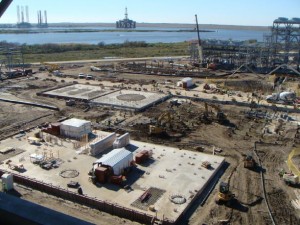U.S. oil inventories have risen 5% in the past four weeks to 477 million barrels, the highest seasonal in 85 years. Supplies have risen as refineries have slowed processing to perform seasonal maintenance. According to information from the U.S. Energy Information Administration (EIA), refineries ran at 86% utilization rate during the week of October 18, compared with 96% at the end of July. One reason for the 10% decline is because the industry is in the middle of the fall refinery maintenance season. There is concern that cheap and high inventory levels of crude feedstocks will eventually translate to cheap and overstocked refined product inventory, putting a serious damper on downstream profitability, currently the only bright spot in the energy industry value chain.
This margins concern hasn’t happened yet, as evident by refiners that began calling in their third quarter 2015 (3Q 2015) earnings reports in late October. For example, on October 28, Valero Energy Corporation reported a better-than-expected quarterly profit, helped by robust demand for refined products and lower crude costs. Refiners are still pumping out strong profits due to high crack spreads. Valero’s CEO, Joe Gorder, said on October 28 that Valero expects continued healthy gasoline demand in 4Q 2015, even after accounting for a seasonal winter downturn in motor fuel consumption. Valero’s refining margin rose to $14.38/bbl in 3Q 2015 (ended September 30), from $11.81/bbl a year earlier. To be sure, refiners such as Valero are benefiting from a reduction in inflation, giving a boost to consumers while also reducing the cost of transporting feedstocks to upgrading facilities. This of course benefits all refiners.
Nonetheless, there are concerns that refiners will eventually feel some of the same margins depression experienced by the upstream industry. Global oil and gas markets are oversupplied along with some of the processing segments of the energy industry, such as LNG. It appears that many proposed LNG projects, from British Columbia to the U.S. Gulf Coast may never be built. The positive downstream refining and petrochemicals profit reports for 3Q 2015 seems to indicate that the downstream will continue to insulate the energy industry, but cost cutting and reduced CAPEX initiatives are going into effect in 2016 as refiners seek to ensure revenue stability.
Refiners seem to be planning for more global business volatility going forward as the world economy slows down and the dynamics of foreign exchange reserves are changing pricing practices within oil producing economies and central banks, thereby affecting financial support for CAPEX driven projects. One analyst taking a macro view of long-term refinery profitability suggests looking at long-term profitability trends of other basic industries, such as the crisis facing the world’s largest steel industry, China, which produces about half of the world’s steel output. According to Zhu Jimin, deputy head of the China Iron & Steel Association, he said on October 28, “Steel demand is collapsing along with prices, banks are tightening lending and losses are stacking up. Production cuts are slower than the contraction in demand, therefore oversupply is worsening.” Zhu also cautioned that, “Financing remains an acute problem as banks strictly restricted lending to the steel sector [and at higher interest rates].” Zhu added that many steel mills found their loans difficult to extend or were asked to pay higher interest. At some point, let’s say beyond 2017, this same financial paradigm could begin affecting refiner’s access to capital. Only time will tell.








Leave a Reply
You must be logged in to post a comment.